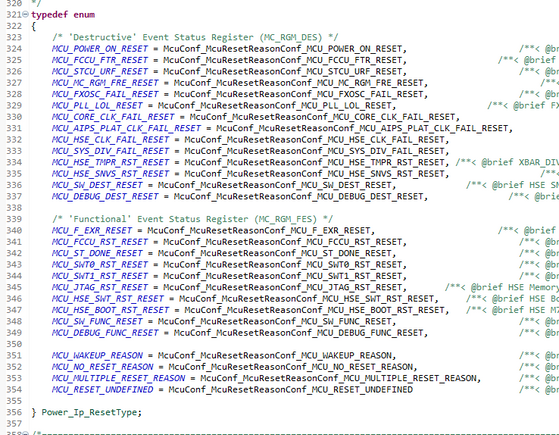- Forums
- Product Forums
- General Purpose MicrocontrollersGeneral Purpose Microcontrollers
- i.MX Forumsi.MX Forums
- QorIQ Processing PlatformsQorIQ Processing Platforms
- Identification and SecurityIdentification and Security
- Power ManagementPower Management
- Wireless ConnectivityWireless Connectivity
- RFID / NFCRFID / NFC
- Advanced AnalogAdvanced Analog
- MCX Microcontrollers
- S32G
- S32K
- S32V
- MPC5xxx
- Other NXP Products
- S12 / MagniV Microcontrollers
- Powertrain and Electrification Analog Drivers
- Sensors
- Vybrid Processors
- Digital Signal Controllers
- 8-bit Microcontrollers
- ColdFire/68K Microcontrollers and Processors
- PowerQUICC Processors
- OSBDM and TBDML
- S32M
- S32Z/E
-
- Solution Forums
- Software Forums
- MCUXpresso Software and ToolsMCUXpresso Software and Tools
- CodeWarriorCodeWarrior
- MQX Software SolutionsMQX Software Solutions
- Model-Based Design Toolbox (MBDT)Model-Based Design Toolbox (MBDT)
- FreeMASTER
- eIQ Machine Learning Software
- Embedded Software and Tools Clinic
- S32 SDK
- S32 Design Studio
- GUI Guider
- Zephyr Project
- Voice Technology
- Application Software Packs
- Secure Provisioning SDK (SPSDK)
- Processor Expert Software
- Generative AI & LLMs
-
- Topics
- Mobile Robotics - Drones and RoversMobile Robotics - Drones and Rovers
- NXP Training ContentNXP Training Content
- University ProgramsUniversity Programs
- Rapid IoT
- NXP Designs
- SafeAssure-Community
- OSS Security & Maintenance
- Using Our Community
-
- Cloud Lab Forums
-
- Knowledge Bases
- ARM Microcontrollers
- i.MX Processors
- Identification and Security
- Model-Based Design Toolbox (MBDT)
- QorIQ Processing Platforms
- S32 Automotive Processing Platform
- Wireless Connectivity
- CodeWarrior
- MCUXpresso Suite of Software and Tools
- MQX Software Solutions
- RFID / NFC
- Advanced Analog
-
- NXP Tech Blogs
Hello @Simon-Liu,
There are MC_RGM[DES], MC_RGM[FES] registers that contain the status of the destructive and functional reset sources.
In addition, on exiting a reset sequence after standby exit, the software must perform a read operation on MC_ME[PREV_MODE] and RDSS register. If any bit of the RDSS register is set, the software must ignore the status reported by MC_ME[PREV_MODE] register otherwise the status of MC_ME[PREV_MODE] register reports the device status. If MC_ME indicates last mode as RESET, then perform a reset exit in software else a standby exit.
If you use the RTD drivers, the Ip_Power driver (Power_Ip.c) has this API: Power_Ip_GetResetReason().
Regards,
Daniel
Hello @Simon-Liu,
There are MC_RGM[DES], MC_RGM[FES] registers that contain the status of the destructive and functional reset sources.
In addition, on exiting a reset sequence after standby exit, the software must perform a read operation on MC_ME[PREV_MODE] and RDSS register. If any bit of the RDSS register is set, the software must ignore the status reported by MC_ME[PREV_MODE] register otherwise the status of MC_ME[PREV_MODE] register reports the device status. If MC_ME indicates last mode as RESET, then perform a reset exit in software else a standby exit.
If you use the RTD drivers, the Ip_Power driver (Power_Ip.c) has this API: Power_Ip_GetResetReason().
Regards,
Daniel
Thank you for your answer.
I noticed that in the Power configuration of DS, there are some values in the picture below. Calling the Power_Ip_GetResetReason() interface returns these values, right?
Regards,
Simon

